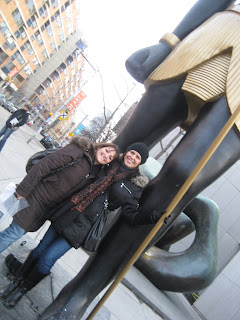The Ancient Egyptians believed that as long as a pharaoh's name was remembered he would live for all eternity. Tutankhamun also known as King Tut was a minor King. He died when he was only nineteen years old, but the discovery of the tomb of Tutankhamun and its fabulous wealth has made King Tut one of the most famous Pharaohs of Ancient Egypt.
King Tut belonged to the Eighteenth dynasty of Egyptian Kings during the period of the New Kingdom. His family members included the following:
• The Father of Tutankhamun was Akhenaten, first known as Amenhotep
• The Mother of Tutankhamun was believed to be a noblewoman called Kiya
• His Stepmother was Nefertiti, the chief wife of Akhanaten
• The wife and consort of King Tut was Ankhesenpaaten (aka Ankhesanamum), who was also his half sister
• Children: None survived. His two daughters were still born and were buried with Tutankhamun
King Tut had five names reflecting the divine roles that were attributed to pharaohs. Each of his names defined a sacred function that was overseen by the gods. The five names of King Tut were his birth name, protected name, Horus name, Golden Horus name and throne name are as follows:
• His birth name, the Sa Ra (“son of the Sun”), Tutankhaten (“the living image of Aten”) later changed to Tutankhamun (“the living image of Amun”).
• In his role as Horus he is named as Heru: Ka Nakht, Tut Mesut (“Horus: Strong bull, of perfect birth”)
• His name under the protection of Nekhebet and Wadjet is Nebty: Nefer Hepu Segereh Taui (“He of the Good Laws, Who Pacifies the Two Lands”)
• His Golden Horus name, that identified his kinship to the gods as their son on earth, was Heru Nebu: Wetches Khau Sehotep Neteru (“He who Wears the Crowns and Satisfies the Gods”)
• His throne name was Nesu Bity (“king of upper and lower Egypt”) and this is Nebkheperura (“all the transformations of Ra”)
Tutankhamun was born in 1343 BC. Tutankhamun was first known as Tutankhaten, meaning "Living Image of Aten". The background of King Tut encompasses one of the most chaotic periods in the history of Ancient Egypt. It was the time when the lives of all Ancient Egyptians were turned upside down. The father of Tutankhamun was Akhenaten who became known as the heretic king. The religious ideas of his father radically changed Ancient Egypt from a polytheistic religion, worshipping many gods, to monotheism which was the worship of one god - the Aten depicted as the sun disc. The Ancient Egyptians had worshipped the same gods for literally thousands of years - the number of gods they worshipped numbered nearly 2000. The Ancient Egyptians were forced to abandon their old gods and Akhenaten used the might of the Egyptian army to enforce these ideas and destroy the old religion and its priesthood. The entire population of Thebes, numbering over 20,000 people, were moved to the new city of Armana which Akhenaten had built as his new capital. The powerful priests of Amun were expected to worship the sole god Aten. Akhenaten ordered that all images of all other gods were ordered to be destroyed. The traditional temple based economy, run by priests of Amun, had been replaced by the new regime, run by local administrators and military commanders.
King Tut died unexpectedly in the year of 1325 at the age of 18/19. He reigned for just 9 years and the cause of his death still remains a mystery. He was buried in his hastily prepared tomb in the Valley of the Kings 70 days after his death, according to the death rituals of the Ancient Egyptians.




No comments:
Post a Comment